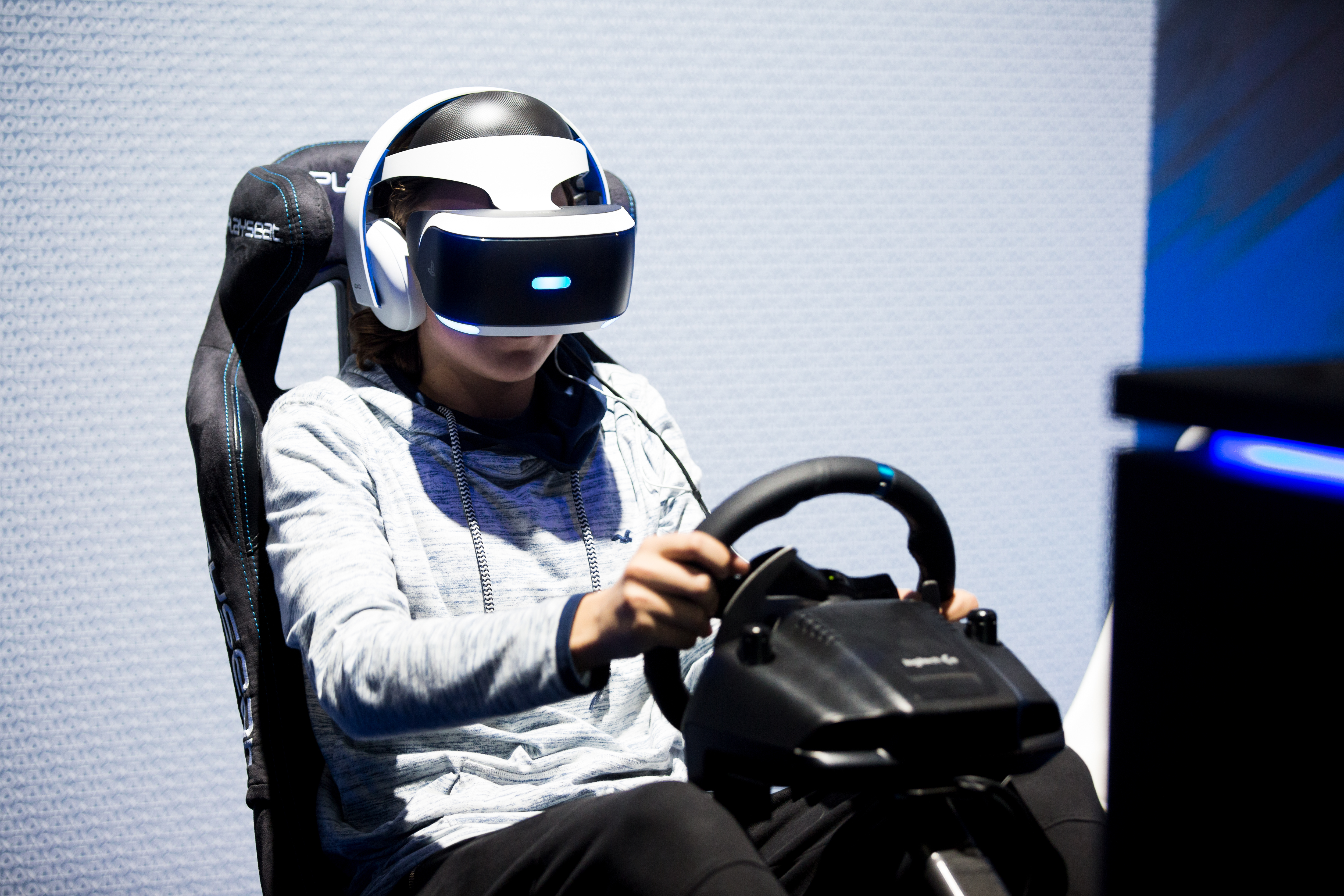Virtual reality, also known as VR, is an artificial, three-dimensional computer environment. A VR experience is typically viewed through a headset. It replaces what a person normally sees and hears with computer-generated images and sounds. The result is that the user feels as if he or she has entered another place. Many electronic games also feature three-dimensional environments. But they are viewed on television or computer screens.

In most VR systems, the user wears a head-mounted display (HMD). This device contains one or two small display screens and stereo headphones. The HMD can be a helmet, goggles, lightweight glasses, or a framework that holds a smartphone or other portable device in front of a user’s face. When wearing an HMD, the user sees a three-dimensional view. This effect occurs because the computer sends slightly different pictures to each eye.
In VR systems, sensors enable the computer to track the user’s head and body movements. When the head is turned in a particular direction, the computer determines what the user sees and hears when looking in that direction. Some VR systems allow a user to walk throughout a large room. VR systems can also track hand movements. They can generate the illusion that the user is touching objects. This illusion is typically provided by visual and sound feedback given in response to the user’s movements. But current virtual reality systems cannot mimic weight or resistance. A user who picks up a ball in a virtual environment, for example, does not feel the weight of the ball.
Along with virtual reality, the terms virtual environment and synthetic environment are sometimes used to describe room-sized devices. One such device is a CAVE (Cave Automatic Virtual Environment) system. It projects images on the floor and any of three walls of a room. The images change depending on the position of the user.
No VR systems can duplicate the detail and complexity of the real world. But the illusion is good enough for use in various applications, particularly in training. The National Aeronautics and Space Administration (NASA) has used virtual reality to prepare astronauts and their ground crews for space shuttle missions. VR also has applications in architecture, education, engineering, and medicine.
The term virtual reality was coined by the artist and scientist Jaron Lanier in the late 1980’s. But early research on VR began in the 1960’s, most notably by the computer scientist Ivan Sutherland. VR games first appeared in stores and arcades in the early 1990’s. In 1995, the Japanese video game company Nintendo introduced a portable VR system called the Virtual Boy. But it was a commercial failure.
In the late 2000’s and early 2010’s, some smartphones began featuring augmented reality (AR) functions. Such functions share some similarities with virtual reality. In augmented reality, a virtual image is laid over the viewer’s real environment. Viewers can experience AR through a headset device, through the screen of a smartphone, or through other kinds of devices.
In the mid-2010’s, advances in computing power and screen detail led to a new interest in commercial VR systems. Oculus, a VR company owned by Facebook, Inc. (now called Meta Platforms, Inc.), released a popular new VR system in 2016. Other computer and electronic game companies also developed new VR systems, as well as VR programs designed for smartphones.
